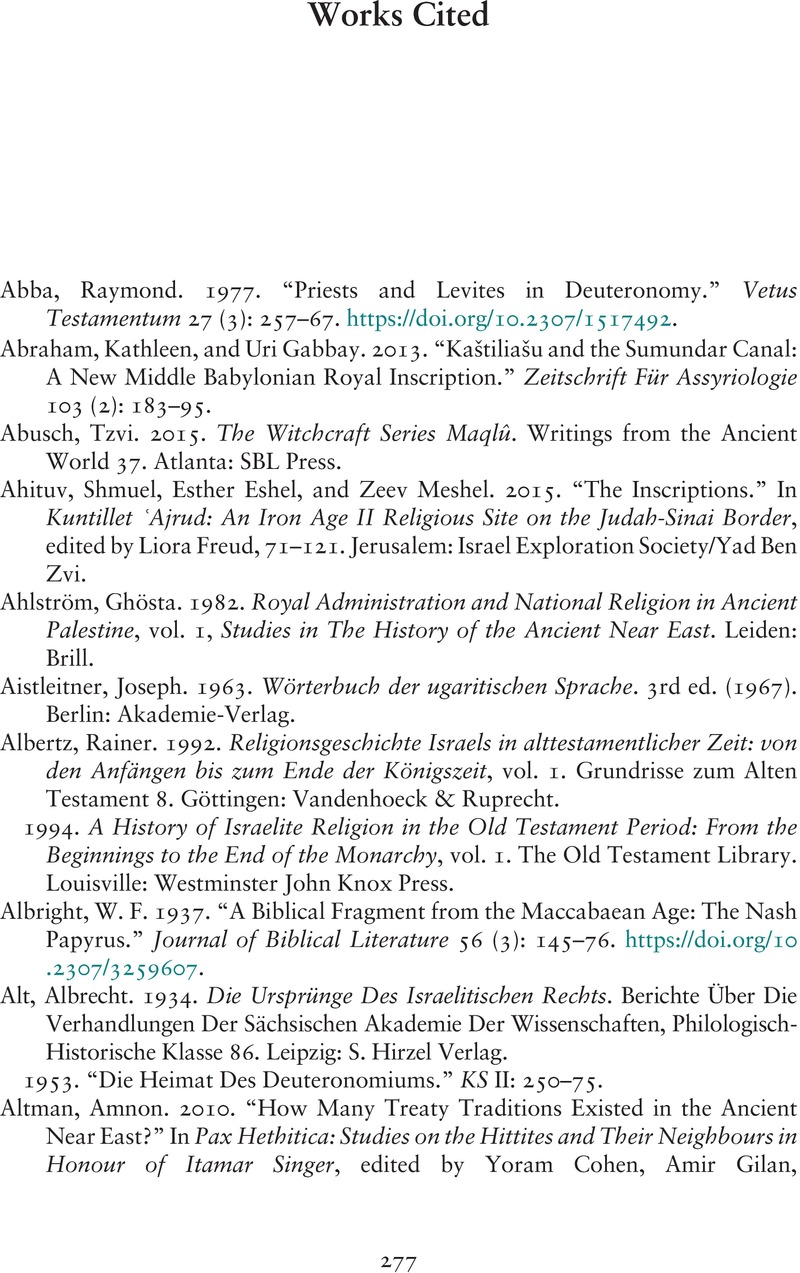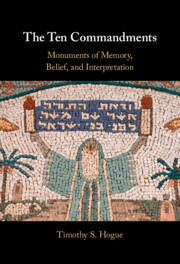Book contents
- The Ten Commandments
- The Ten Commandments
- Copyright page
- Contents
- Figures
- Preface
- Acknowledgments
- Introduction
- 1 Levantine “I Am” Monuments
- 2 The Decalogue in the Book of Exodus
- 3 The Decalogue in the Book of Deuteronomy
- 4 The Afterlife of the Decalogue in the Postmonarchic Period
- Conclusion
- Book part
- Works Cited
- Scripture Index
- Subject Index
- References
Works Cited
Published online by Cambridge University Press: 20 September 2023
- The Ten Commandments
- The Ten Commandments
- Copyright page
- Contents
- Figures
- Preface
- Acknowledgments
- Introduction
- 1 Levantine “I Am” Monuments
- 2 The Decalogue in the Book of Exodus
- 3 The Decalogue in the Book of Deuteronomy
- 4 The Afterlife of the Decalogue in the Postmonarchic Period
- Conclusion
- Book part
- Works Cited
- Scripture Index
- Subject Index
- References
Summary

Information
- Type
- Chapter
- Information
- The Ten CommandmentsMonuments of Memory, Belief, and Interpretation, pp. 277 - 316Publisher: Cambridge University PressPrint publication year: 2023
